News 1+1 Environmental control life insurance system, astronaut’s "umbrella"!
One of the great events in today’s news is that our mission of the Quest Experiment Module has completed the regional training between systems before launch, which also means that all preparations have been made and it is necessary to launch at the right time. From the ground to space, since the successful launch of Shenzhou XIV on June 5, our three astronauts have been working and living in orbit for 47 days. At the beginning of today’s program, let’s take a look at their life today and see what they are busy with.
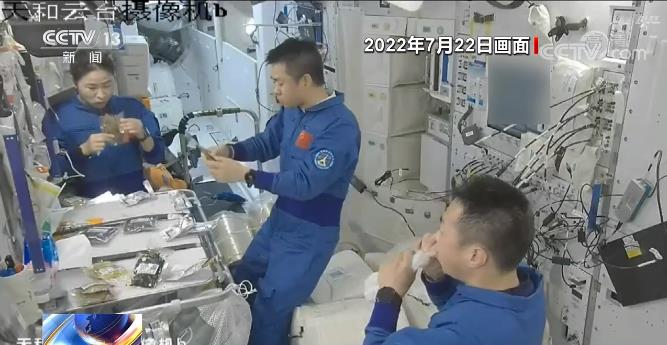
This is a picture of three astronauts having breakfast today. Facing us is female astronaut Liu Yang, the middle is astronaut Chen Dong, and the back to the camera is astronaut Cai Xuzhe.
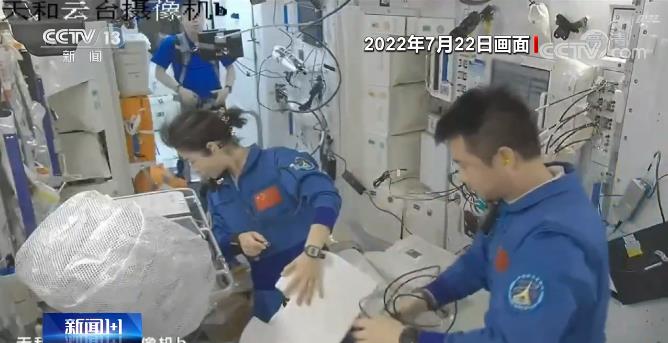
This is the picture after dinner. Liu Yang and Chen Dong are operating instruments, while Cai Xuzhe behind them is exercising.
It can be seen that everyone is in good shape. In fact, in recent days, the astronauts are stepping up the arrangement of materials transferred from Tianzhou-3, and also training the next manual rendezvous and docking backup plan. During this period, they also completed an important task and witnessed a magical moment. Let’s take a look at this moment that we have never seen before.
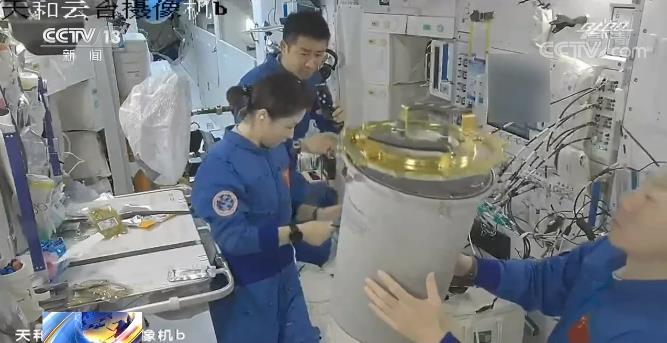
This work is to check the conversion state of the water tank in the carbon dioxide reduction system. Where does carbon dioxide come from? It was breathed by astronauts, and what did the reduction turn into through the system? That is water.
You can see Liu Yang pumping the water tank out of the system. Liu Yang and Cai Xuzhe are checking the condition of the water tank. Of course, after that, the water tank will be connected to the treatment system for purification, and finally pure reclaimed water will be generated. What do you think of this magical system? How much can this extra bucket of water do? More importantly, how to make resources such as water and oxygen can be recycled in space, "endless"? Among them, what role is the environmental control and life support system playing? Today’s program, let’s start with the process behind this application.
Can carbon dioxide be converted into water?
On May 10th, Tianzhou-4 cargo spacecraft flew to China Space Station on the Long March 7th Yao-5 carrier rocket. It is worth noting that the items launched with the cargo spacecraft include a carbon dioxide reduction system.
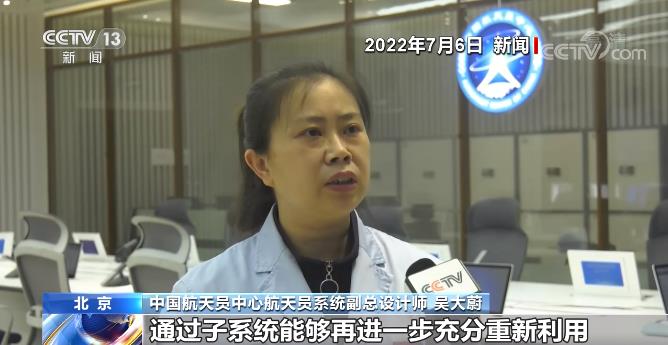
Wu Dawei, deputy chief designer of astronaut system of China Astronaut Center.It (carbon dioxide reduction system) can mainly realize regeneration, and the carbon dioxide exhaled by us can be further fully reused through the subsystem and then used in our space station.
What is the final form of reuse after carbon dioxide conversion? The answer is: water, domestic water for astronauts to drink.
On June 5th, Shenzhou XIV manned spacecraft was successfully launched. Astronauts Chen Dong, Liu Yang and Cai Xuzhe entered the space station to perform a series of important tasks, including the related work of carbon dioxide reduction system.
According to the plan, on June 23, three astronauts completed the assembly and testing of the carbon dioxide reduction system with the cooperation of ground personnel.
How will the system work after the assembly test is completed? Can carbon dioxide really be successfully converted into water? Just recently, the answer was revealed.
In fact, before this, in order to achieve the goal of long-term residence of astronauts in China Space Station and recycle resources such as water and oxygen, the "environmental control and life support" system has already been put into use. The top priority for astronauts in Shenzhou 12 is to install, debug and experience this system.

Astronaut Liu Boming: How did the reclaimed water come from? There are mainly two parts, one is the condensed water we collected in the cabin, and the other is the distilled water formed by urine collection and urine treatment.
During the three-month on-orbit flight of Shenzhou 12, three astronauts verified all the functions of the system, realized the recycling of oxygen, water and other resources in the space station, and drank Kung Fu tea in space.
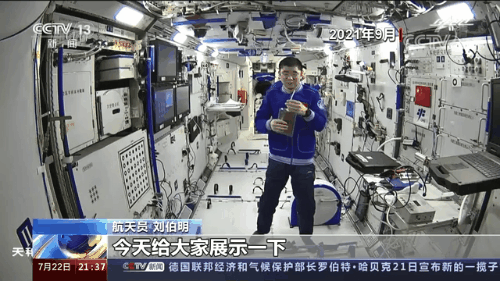
Astronaut Liu BomingI’ll show you a drink of kungfu tea.
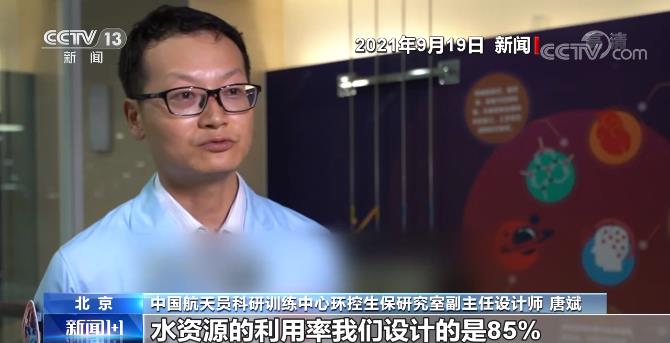
Tang Bin, Deputy Director of Environmental Control and Life Insurance Research Office of China Astronaut Research and Training Center.The utilization rate of water resources is designed to be 85%, and now it completely meets our design index. Up to now, reclaimed water has been used, and gas purification in the cabin does not need to consume some consumables. It is a recycling process, so that a long-term manned mission can be guaranteed.
New system and new achievements
In fact, the reduction system of converting carbon dioxide into water mentioned in the short film is a part of our whole environmental control and life support system.
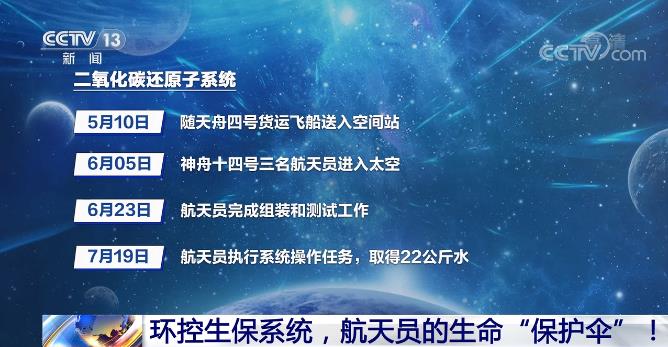
The composition of this system is very complicated. It should provide the astronauts with oxygen needed for atmospheric pressure and breathing, remove carbon dioxide in the air in time, remove trace harmful gases, microorganisms and dust, ensure good air quality, control comfortable air temperature and humidity, and ensure the basic needs of astronauts’ survival such as drinking water and defecation. Simply put, it is to provide protection for our astronauts to survive, live and work in the space environment, also known as the "protective umbrella" for astronauts’ lives. What do you think of the application of the latest carbon dioxide reduction system?
Next, we immediately connected an expert: Li Sen, associate researcher of China Astronaut Center and chief designer of the environmental control and life support system of China Space Station.
Can the water converted by the carbon dioxide reduction system be directly drunk? Is it delicious?
Li Sen, chief designer of environmental control and life support system of China Space Station.These 22 liters of water can’t be drunk directly. They are the reduced water generated by the carbon dioxide reduction subsystem and belong to the intermediate water. They can be drunk after being purified by the water treatment system. It should be said that no matter the reclaimed water produced after urine or sweat treatment or the reclaimed water produced after reduction and transformation of carbon dioxide gas, the taste is the same.
Can astronauts drink the reclaimed water after sweat and urine treatment?
Li Sen, chief designer of environmental control and life support system of China Space Station.We have done a full test on the ground. We returned from Shenzhou 12 to descend the reclaimed water produced in orbit, and then tested all the indicators on the ground, and all the indicators were qualified, and the water quality fully met the requirements of drinking water. In addition, astronauts have also experienced the process of drinking reclaimed water for a period of time on the ground, so astronauts can face it calmly.
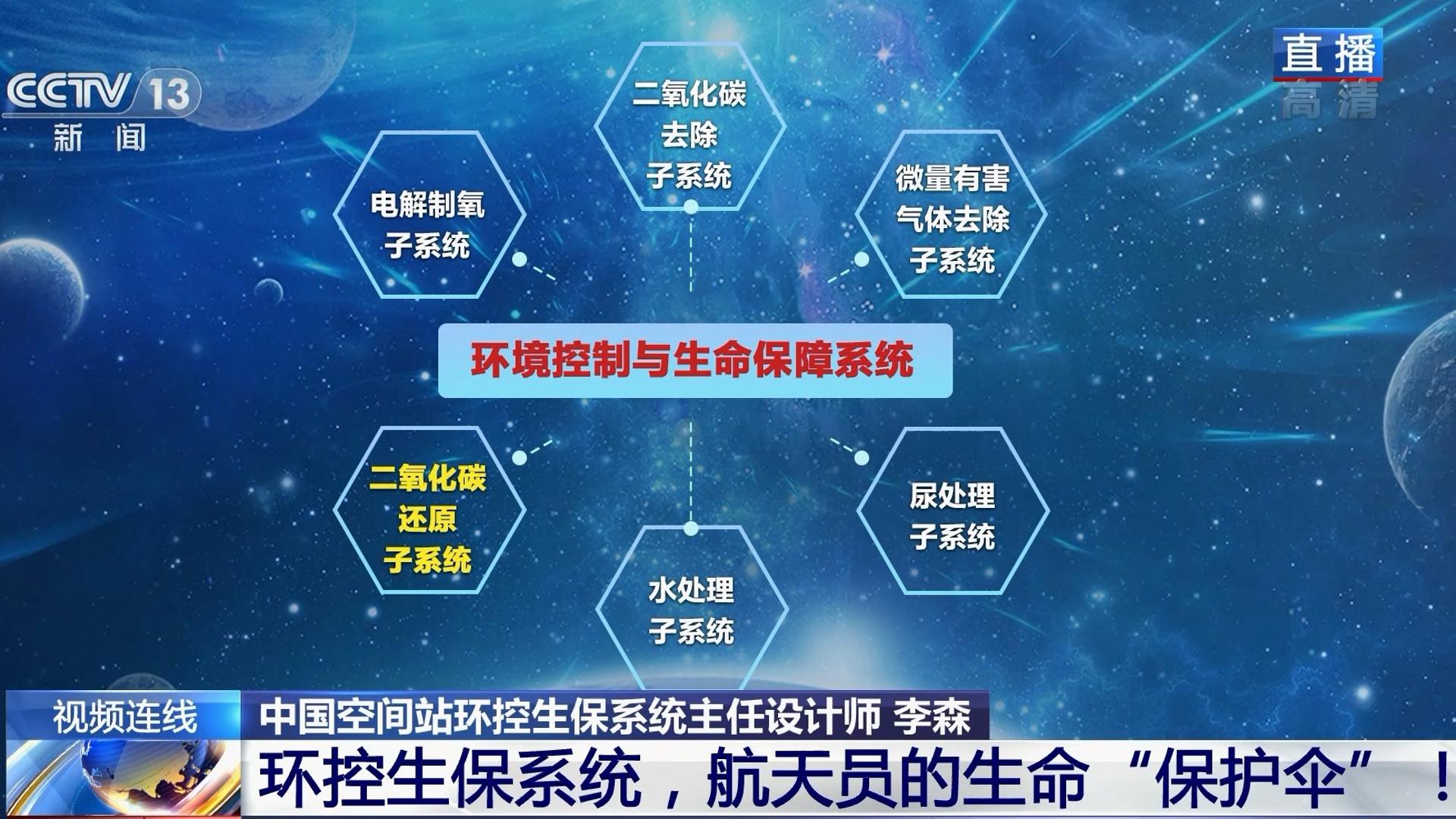
China Space Station, the recycling rate of water resources has exceeded 90%
Li Sen, chief designer of environmental control and life support system of China Space Station.Prior to this, our environmental control and life support system has realized the regeneration of atmosphere and water through the operation of five regeneration subsystems, namely, electrolytic oxygen generation subsystem, carbon dioxide removal subsystem, trace harmful gas removal subsystem, urine treatment subsystem and water treatment subsystem, and the material closure degree of water resources has exceeded 80%. This time, through the stable operation of carbon dioxide reduction subsystem, we can recover about one kilogram of water every day, so that the material closure degree of water resources has increased to 90%.
In other words, more than 90% of the water that astronauts in orbit drink is produced by our reclaimed water. Of course, a small part of it is replenished by the ground through cargo ships, which accounts for less than 10%.
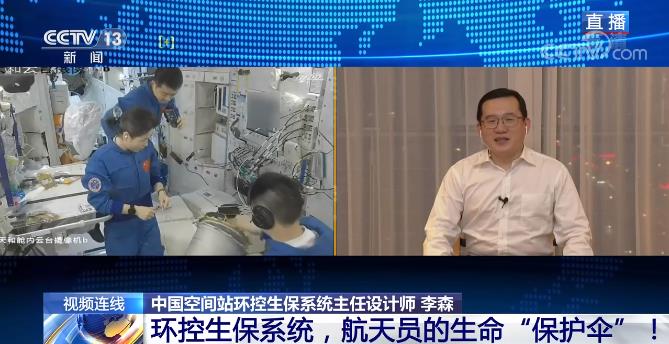
Every kilogram of reclaimed water generated by the system is equivalent to saving one kilogram of gold.
Li Sen, chief designer of environmental control and life support system of China Space Station.In the space station, one kilogram of water is generated through the system, which means that we can supply one kilogram of water less every day in the future, which means that we don’t need to transport one kilogram of water from the materials on the ground. As the saying goes, "one gram weighs one gram of gold", and the launch cost of a rocket spacecraft with one gram of weight is about the value of one gram of gold.
If one kilogram of water is not replenished on the ground, it is equivalent to saving one kilogram of gold, which is equivalent to about 400,000 yuan. Therefore, the application of environmental control and life support system greatly reduces the replenishment of launch.
The environmental control life insurance system has been running for more than a year. What’s the situation?
Li Sen, chief designer of environmental control and life support system of China Space Station.From the launch of Tianhe core cabin to now, our environmental control life support system has been running for more than a year. Over the past year or so, the five subsystems have been running very stably, and all the parameters are relatively stable, and the system functions have been well realized, including the electrolytic oxygen production system, which provided sufficient oxygen for the 90-day stay of the three astronauts on Shenzhou 12 and the 180-day stay of the three astronauts on Shenzhou 13, and also removed the carbon dioxide and harmful gases generated, provided water and other resources, and ensured the life safety of the astronauts in orbit. The whole system should be said to be running very well.
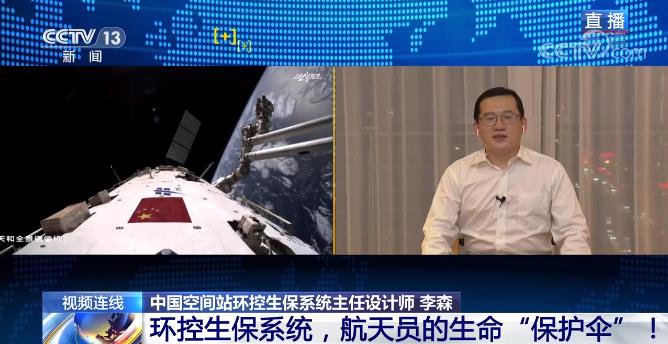
How many astronauts can the environmental control life support system guarantee for a long time?
Li Sen, chief designer of environmental control and life support system of China Space Station.Judging from the on-orbit operation of Shenzhou 12 and Shenzhou 13, the current gear of our environmental control life support system is relatively matched with the operation in three-person mode, and the operation level is still good.
Judging from the current data, this system in our core cabin can support the operation of six people, including electrolytic oxygen production system and carbon dioxide removal system. It’s just that when six people are running, they will definitely work to a higher gear, or we will handle it faster.
What will be the future of environmental control life insurance system?
Li Sen, chief designer of environmental control and life support system of China Space Station.The technical development of our environmental control and life support system has been aimed at further improving the material closure. For example, water resources, we have now achieved more than 90% recycling, and a new generation of atomization regeneration technology is being studied. For example, we should further extract water from the residual urine produced by the urine treatment system at present, further recover the water and improve the material closure of water resources.
At present, we are conducting research on the ground, and in the future, we will use new technologies, such as biological regeneration technology, to realize food regeneration and reach a higher level of environmental control and life support technology.
How to make resources "endless" in space? How to better ensure that astronauts can fly with peace of mind and work and live safely and comfortably in the sky? We continue to pay attention.
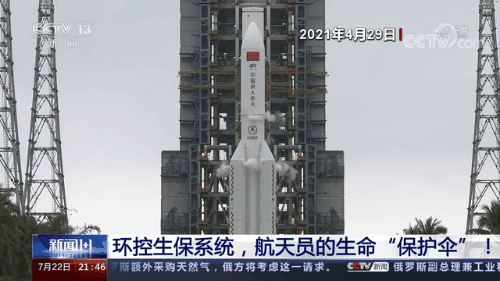
Environmental control life support system: from non-regeneration to regeneration
On April 29, 2021, Tianhe core module soared from Hainan Wenchang Space Launch Site, announcing the success of the first battle of China’s space station construction, and China officially entered the space station stage.
After the completion of the space station, how can astronauts stay in a closed and narrow cabin for a long time? How to ensure the air pressure, wind speed, air quality and water suitable for human survival? The environmental control and life support system of space station is the key to answer this series of questions.
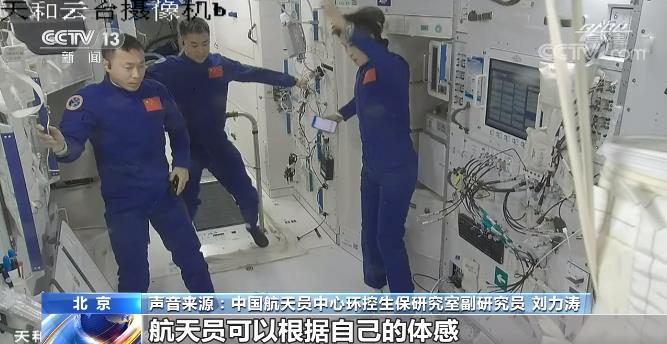
Liu Litao, Associate Research Fellow, Environmental Control and Life Insurance Research Office, China Astronaut CenterIn the space station, the astronaut can feel according to his own body. He thinks that my temperature is high now, so I can lower it by 1℃. If the temperature is low, I can raise it by 1℃, which is completely self-controlled, similar to turning on the air conditioner.
In short-term flight, astronauts use consumptive non-renewable technology. After the long-term mission to the space station, if we rely on non-renewable technology, the supply pressure on the ground will be very great. In addition, the regeneration of oxygen resources is also very important. After all, astronauts can’t leave oxygen for a second, and if the carbon dioxide is too high, people will be in a coma. Then, how do the oxygen, water and other resources necessary for astronauts to live in the space station move from "non-regeneration" to "regeneration"?

Liu Xiangyang, researcher of China Astronaut Center and deputy chief designer of space station system.We regenerate and purify gases, including the removal of carbon dioxide and trace harmful gases. In addition, water is electrolyzed into oxygen for them to breathe. After urine is treated into distilled water, it will enter a water treatment system and be treated into drinking water, including condensed water, which can also be treated into drinking water. The joint matching of these five sets (sub-systems) in orbit can greatly save the consumables of our astronauts on the ground.
Today is the 449th day of the in-orbit operation of Tianhe core module. As the astronauts stay in orbit longer and longer, the life requirements for environmental control and life support will naturally be high in the future. In addition, the astronauts’ on-orbit maintenance and environmental control life support project will also be an important direction of system development.
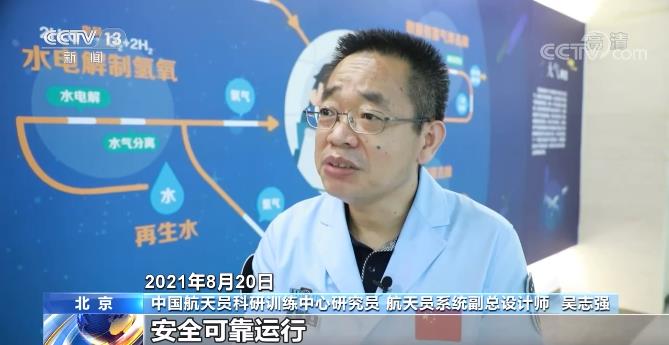
Wu Zhiqiang, researcher of China Astronaut Research and Training Center and deputy chief designer of astronaut system.We should always ensure the safe and reliable operation of this system, and it can be maintained in case of failure, so the design concept of on-orbit maintenance is also paid special attention to during the system development. For example, to prevent people from designing by mistake, a large number of special designs have been carried out like these.
At present, the space station assembly has been adjusted into orbit, and it has the conditions for rendezvous and docking with the space station. After docking, the astronauts will enter the cabin to start the life support system, complete the assembly of the scientific experiment cabinet and carry out cross-scientific experiments. A series of expectations are getting closer and closer.